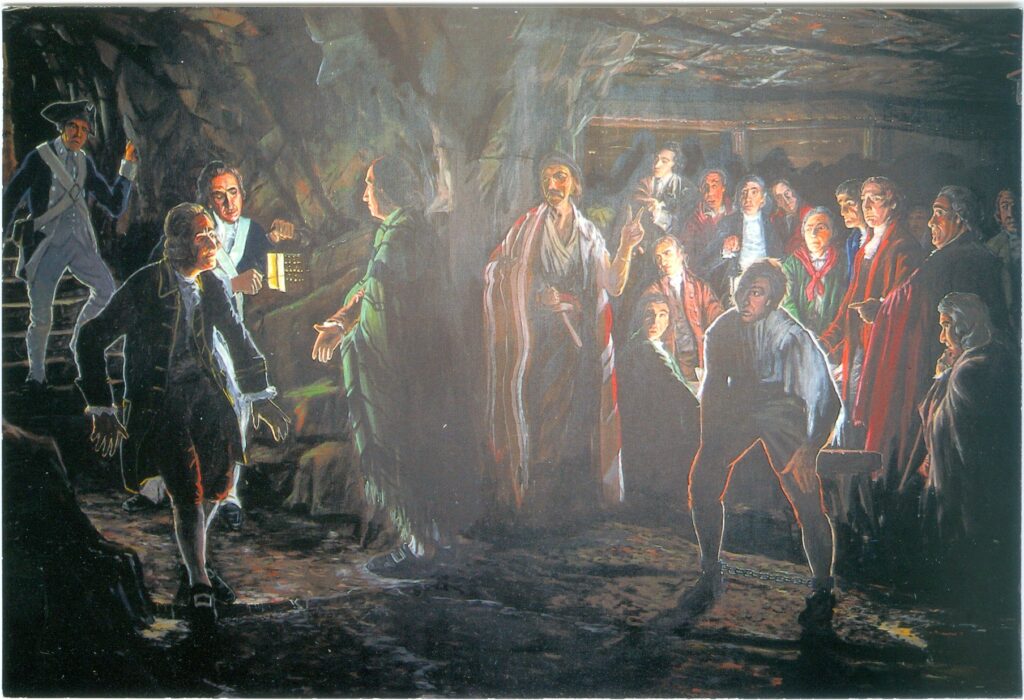
During the American Revolution, political imprisonment played a significant role in the incarcerated population, particularly with the arrest of Loyalists (or “Tories”) who supported the British monarchy. New-Gate became a prime destination for housing Tory prisoners. In February 1781, the Governor of Connecticut and Council of Representatives passed the “Act For Punishment Of High Treason And Other Atrocious Crimes Against The State,” which authorized the imprisonment of Loyalists at New-Gate as punishment for joining British forces or committing crimes[1]. In response to this treatment, Ebenezer Hathaway and Thomas Smith, convicted of “joining the enemy,” orchestrated a daring escape along with twenty other Tories in May 1781. Their successful breakout from New-Gate Prison represented their resolute resistance against politically motivated confinement and the pro-independence movement as a whole.
[1] Bengel, Morgan. “A Deeper Look at Loyalists in Newgate Prison.” Digital Farmington, December 20, 2017. https://digitalfarmington.org/crime-and-the-law/a-deeper-look-at-loyalists-in-newgate-prison/.